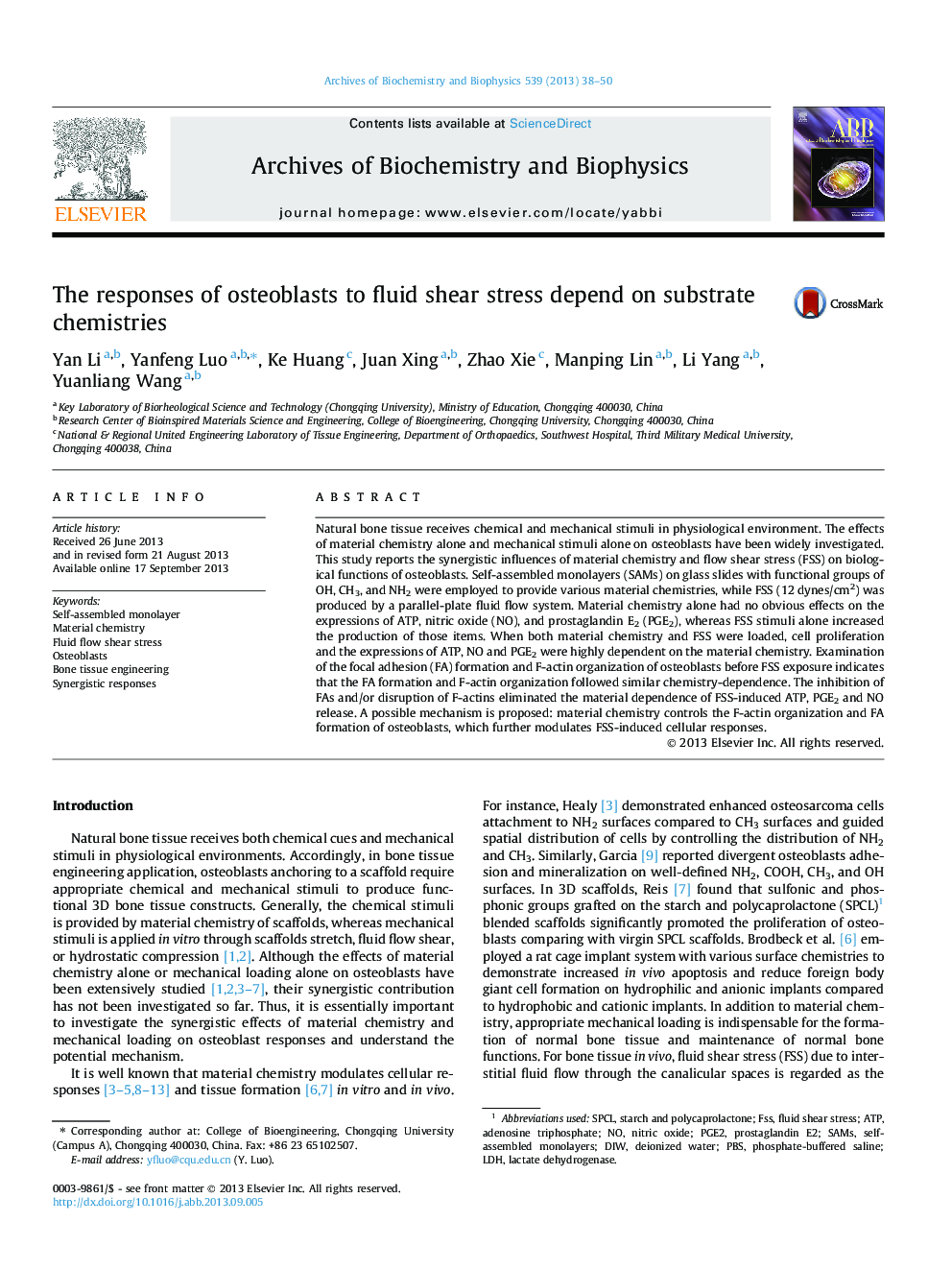| Article ID | Journal | Published Year | Pages | File Type |
|---|---|---|---|---|
| 8290532 | Archives of Biochemistry and Biophysics | 2013 | 13 Pages |
Abstract
Natural bone tissue receives chemical and mechanical stimuli in physiological environment. The effects of material chemistry alone and mechanical stimuli alone on osteoblasts have been widely investigated. This study reports the synergistic influences of material chemistry and flow shear stress (FSS) on biological functions of osteoblasts. Self-assembled monolayers (SAMs) on glass slides with functional groups of OH, CH3, and NH2 were employed to provide various material chemistries, while FSS (12Â dynes/cm2) was produced by a parallel-plate fluid flow system. Material chemistry alone had no obvious effects on the expressions of ATP, nitric oxide (NO), and prostaglandin E2 (PGE2), whereas FSS stimuli alone increased the production of those items. When both material chemistry and FSS were loaded, cell proliferation and the expressions of ATP, NO and PGE2 were highly dependent on the material chemistry. Examination of the focal adhesion (FA) formation and F-actin organization of osteoblasts before FSS exposure indicates that the FA formation and F-actin organization followed similar chemistry-dependence. The inhibition of FAs and/or disruption of F-actins eliminated the material dependence of FSS-induced ATP, PGE2 and NO release. A possible mechanism is proposed: material chemistry controls the F-actin organization and FA formation of osteoblasts, which further modulates FSS-induced cellular responses.
Keywords
Related Topics
Life Sciences
Biochemistry, Genetics and Molecular Biology
Biochemistry
Authors
Yan Li, Yanfeng Luo, Ke Huang, Juan Xing, Zhao Xie, Manping Lin, Li Yang, Yuanliang Wang,
